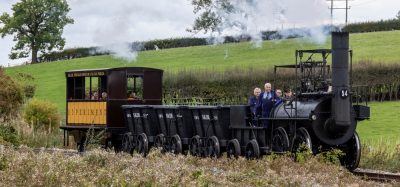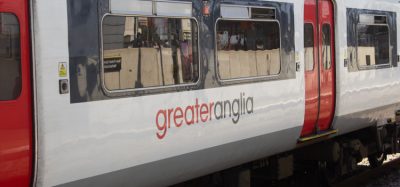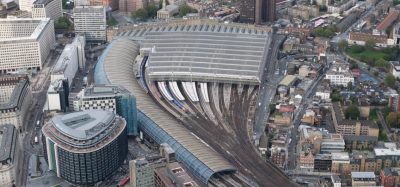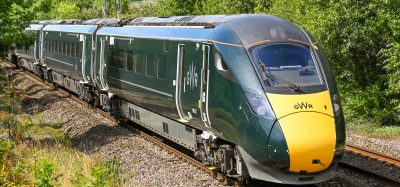Regeneration and renewal: investing in building better stations
Posted: 3 December 2008 | | No comments yet
More people are travelling by rail in Great Britain than ever before. Each day, over three million passenger journeys are made across the country, using the 2,500 mainline stations. Such is the popularity of rail at present that these figures are expected to rise by 30% in the next decade alone. However, this success brings with it major challenges as we need to increase the capacity of the rail network to accommodate extra demand, while still maintaining high levels of service and punctuality.
More people are travelling by rail in Great Britain than ever before. Each day, over three million passenger journeys are made across the country, using the 2,500 mainline stations. Such is the popularity of rail at present that these figures are expected to rise by 30% in the next decade alone. However, this success brings with it major challenges as we need to increase the capacity of the rail network to accommodate extra demand, while still maintaining high levels of service and punctuality.
More people are travelling by rail in Great Britain than ever before. Each day, over three million passenger journeys are made across the country, using the 2,500 mainline stations. Such is the popularity of rail at present that these figures are expected to rise by 30% in the next decade alone. However, this success brings with it major challenges as we need to increase the capacity of the rail network to accommodate extra demand, while still maintaining high levels of service and punctuality.
With every rail journey beginning and ending at a station – an obvious fact, but one that should not be overlooked – the way rail stations are managed and maintained plays an important part in giving passengers the right experience and contributing to the success of the railway as a whole. Passengers not only expect stations to be safe and secure, but be clean while offering an inviting environment where people can catch their train with ease and minimal fuss.
We have already made some significant progress in improving and upgrading stations, creating a better environment for passengers. However, there is still much to do. Over the next five years, we will continue carrying out further significant investment and we have some major schemes ahead that will make a real difference to passenger journeys.
Such improvements require working closely with train operators, local authorities, the Government and other stakeholders. We are committed to working with train operators and others to identify the best way of operating, planning and delivering station schemes.
Our vision is for a close partnership with train operators and working with other stakeholders to deliver a consistent and coordinated first class standard of service. Network Rail is committed to working in this partnership to efficiently deliver improved standards to benefit all.
To achieve this, we have to get the simple things right, and that means stations need to be functional. Stations are designed to accommodate large numbers of people, enabling them to arrive, board their trains, and depart for their destination effortlessly. This is especially true for our major interchanges where passengers want to be able to make trouble-free connections with relative ease. Anything that makes things easier, such as clearly displayed customer information screens, signs and directions as well as having staff on-hand to help, underpins our thinking on best practice.
Yet while functionality is, and should remain, our main objective, the growth in the popularity of rail presents us with a number of opportunities to provide convenient facilities for passengers. We want to unlock the commercial potential at many of our stations in order to invest the proceeds in providing the facilities expected of modern stations: popular retail outlets, places to buy some lunch or a coffee before boarding a train, and restaurants and bars providing comfortable places for people to meet, or while away some free time.
At the 18 major stations we manage directly, our aim is to provide such excellent facilities and station services. Their high profile means that we have to get things right to create the best impression, and we are constantly looking at ways we can improve facilities. At franchised stations, Network Rail is the landlord, with train operators managing day-to-day operations. For these, we need to create a close partnership, and work with other stakeholders to deliver a consistent and coordinated high standard of service.
Network Rail has a well established expertise in the operation of the largest stations on the network. We are an independent, long-term station operator and as such will invest and improve the quality of service we provide for passengers and train operators using the station.
Where station capacity has become constrained, refurbishment may not be enough, and a major renovation or even a complete rebuild may be the best option. By building strong partnerships with developers and other businesses, we have been able to tap into extra funding where necessary to help us plan major transformations at several managed stations, such as Birmingham New Street.
These planned developments show how stations, owing to their prime locations, can attract major investors to the industry helping us to create first class facilities with the additional capacity to accommodate the increasing numbers of passengers.
Building upon this, the Government’s White Paper – “Delivering a sustainable railway” – defines how we will work with others to attract investment and make the most of what we have at every station across the country. The key elements of the strategy include having the right number of stations, correctly sized and situated, that incorporate sustainable building and maintenance methods which help reduce costs as well as our impact on the environment. Furthermore, creating new and standard station facilities offering a consistent, high-quality, value for money service for all rail users will also help us to build and maintain better stations.
It is vital, therefore, that station development plays an important role in influencing how the industry thinks strategically about managing long-term growth on the railway. Much has been achieved and there is no doubt there is more to come.
With stations often forming key landmarks for the towns and cities they serve, the industry would do well to recognise that stations offer an opportunity for co-operation with businesses and stakeholders, seeking out ways to get the community involved. Attracting third party investment is crucial in developing opportunities and enhancing our stations and we are in the process of developing integrated station plans with train operators for each station.
However, we have to be careful in balancing the multitude of requirements for space at stations and successfully incorporate operational facilities, facilities for passengers and retail development.
We are striving to improve the mix of shops, catering and services and to introduce new retailers where appropriate. Retail strategy plans are being produced for each station, identifying what is necessary in creating the right mix of retailers to suit the passenger profile.
Building on our successful refurbishment work already carried out at Paddington and Liverpool Street in London, London and Continental Railway’s recently completed renovation at St Pancras has raised the bar further, providing an excellent facility that is as popular with residents and workers in the surrounding area, as it is with passengers.
The success of these refurbishments demonstrates that an ambitious vision for stations, combined with sound planning and investment, can yield big benefits. We are continuing to invest heavily in building better stations at key destinations. We have just started on a major £600 million upgrade at Birmingham New Street where we will create a bold, modern gateway to the city for the millions of people using the station each year. Already underway is the £400 million scheme to redevelop King’s Cross, increasing its capacity while making it a worthy neighbour to St Pancras.
Last November, we also completed a £150 million upgrade of the tracks and platforms at Edinburgh Waverley, providing capacity for the extra services set to operate from the station over the next few years. The station has been significantly changed over recent years, creating a central concourse area linking the platforms with the main station building where the ticket offices are located. More lifts and escalators have also been put in place to improve access to the famous Waverley Steps. Train capacity was also boosted with the construction of four new platforms while extensive track remodelling will increase the number of services the station can reliably handle.
With this work now complete, Edinburgh Waverley is now capable of coping with new services, including those operating on the Airdrie-Bathgate Rail Link, to and from the Scottish capital.
Again, looking to the future, we have also just unveiled proposals to deliver our big investment programme for Reading, Berkshire, a station we lease to the train operator, First Great Western. With funding from the DfT, this extensive track remodelling scheme will enable us to run more trains through Reading, which has become a busy bottleneck on our Great Western route from Paddington to Wales and the West Country.
This investment is one of the most important planned projects for the network and will deliver a huge improvement for passengers locally and nationally as Reading forms a key junction linking services to Wales and the West Country, the south coast and Birmingham and the north. Preliminary work is underway with construction in full swing in 2010. Once completed in 2015, the scheme will enable us to run more trains through Reading, reducing delays, easing overcrowding at the station and help foster economic growth in Reading.
Each one of these projects demonstrates how the industry can be effective in securing funding in completely different ways. Through commercial partnerships, close working relationships with regional development agencies and councils through to direct involvement from Department for Transport, we are actively encouraging investment to help deliver stations fit for the network both now and for the future.
This approach creates a true win-win situation, where offering convenient retail and other commercial facilities increases customer satisfaction which generates more business for the railway, producing an income which can be reinvested in providing more and better facilities for passengers.
Greater challenges lie ahead. There is insufficient spare space to meet the demand for retail outlets at our London stations and at some of the regional stations. Most of our managed stations have benefited from the development of the existing sites and the introduction of strong brands. This has brought not only greater retail choice, but also, with more people using stations for their convenient facilities, an increased sense of security among members of the travelling public.
By capitalising on our investments, we will seek to develop previously undervalued space including basement areas, upper levels and space currently used for storage. We will continue to make the most of what we have, and other commercial opportunities will be investigated and developed where these bring in valuable revenue such as advertising, commercial filming, exhibitions and promotions.
While around £2 billion is to be invested in major managed stations over the next 15 years, we must meet and exceed expectations at all stations across the network. After all, a passenger using Derby or Twickenham stations is just as important as a passenger at Birmingham New Street or London Victoria. This process has been at the heart of the national stations improvement programme (NSIP): a DfT funded programme of improvements, which is delivering £150 million worth of upgrades to over 150 stations, across England and Wales.
Network Rail is also exploiting other ways to help regenerate and improve regional stations and we are always open to business opportunities and is willing to tap into development expertise to release commercial potential on our land. We have developed close working relationships with train operators as well as local authorities, communities and commercial partners to carry out improvements to stations all across the country.
To this end, we have just entered into a joint venture with a development partner which will see station improvements at various sites in the south east, where adjacent underused railway land is developed as a package with the proceeds being invested into station enhancements. A pioneering deal for Network Rail, it creates a true partnership with Kier, each of us having a 50% stake, which will help maximise the value of the chosen sites, delivering significant passenger benefits and creating a sustainable income to improve the railway.
The initial portfolio of sites are six stations at Enfield Town, Epsom, Guildford, Maidstone East, Twickenham and Walthamstow and a further site at Wembley Cutting and have a gross development value in excess of £500 million. The partnership will be a catalyst for sustainable regeneration for these and potentially many more important town centre sites.
There are exciting times ahead for our stations. We have shown that by forming strong partnerships with other industry operators, local authorities, businesses and developers, we can attract significant investment helping us to exploit opportunities to develop and improve our stations in a way that not only meets the capacity challenges, but provide modern facilities that meet the expectations of the travelling public today and well into the future.
Global Railway Review Autumn/ Winter Issue 2025
Welcome to 2025’s Autumn/ Winter issue of Global Railway Review!
The dynamism of our sector has never been more apparent, driven by technological leaps, evolving societal demands, and an urgent global imperative for sustainable solutions.
>>> Read the issue in full now! <<<







